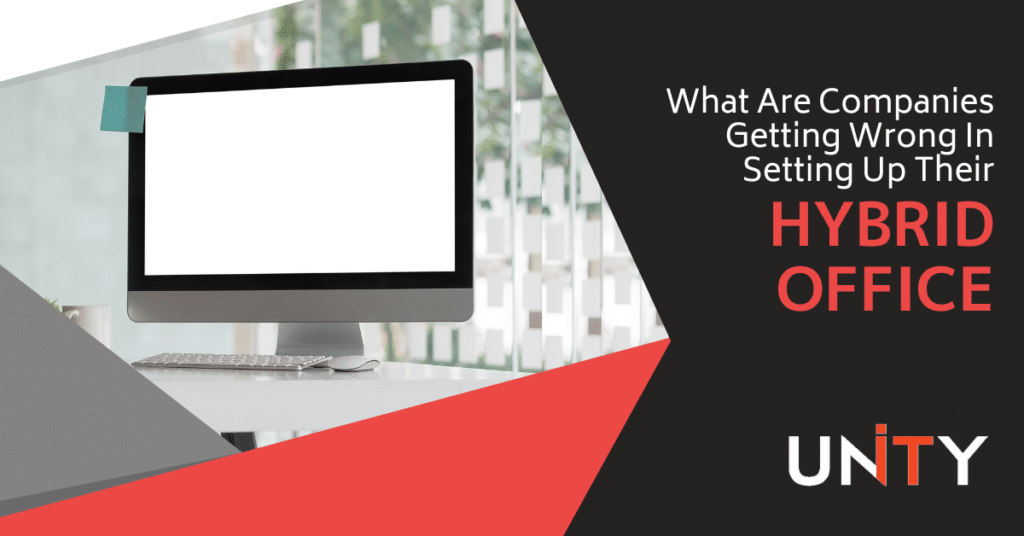
IT recognizes a hybrid office as the in-thing, and many organizations are working to establish one while also carrying out their operational work. Adopting a hybrid office is not an easy task, to begin with. Even the existing ones are encountering various challenges.
Many companies are getting it wrong in motivating or retaining employees. When companies struggle to set up their digital workplaces, it becomes imperative to understand the causes of those challenges and how to overcome them.
What are companies not doing right when setting up hybrid offices? Let’s find out!
6 Things Companies Are Getting Wrong When Creating a Digital Workspace
1. Communication
Technology has dramatically improved communication among employees, especially with the development of various communication tools. However, these tools have also restricted communication patterns adopted in work environments.
While some employees are comfortable communicating over the screen, others are not. This can obstruct the flow of information, especially if an employee owns relevant information and cannot communicate via an adopted communication channel.
Some companies have ignored the type of communication channels that are most suitable in a hybrid office. Neglecting this aspect means avoiding an essential part of the workforce. This, without a doubt, will hinder the successful creation of a hybrid office.
2. Hybrid Work Is Exempted From The Executive Position
Hybrid work permits all employees to adopt a flexible method of working. However, many employees can become biased in engaging remote workers in company executive positions. Most of the time, only in-office workers are considered productive and active.
As such, when there is a need to include employees as a part of the managerial team, only in-office workers are given that privilege. This shows that many employers are biased in embracing remote workers.
If employers want to improve the confidence of remote workers and cause them to believe in the hybrid office, they have to create a system that recognizes all employees equally.
3. Inadequate planning
Considering the advantages of having a digital workplace, it is no surprise that many employees do not even make adequate plans before establishing a hybrid working environment. Although creating a hybrid office may seem easy, it is not as easy as it looks.
In a bid to experience all the benefits of having flexible working arrangements, many companies delve into it without correctly understanding what it entails. Without implementing the right strategies, creating a hybrid office won’t produce the desired results.
Remote workers will not be appropriately managed when there is inadequate planning; business operations will also be affected. Bad planning for how to facilitate an on-site and remote team can negatively impact the company’s profitability.
4. Tight schedule
Every company desires to make profits. The hybrid office promises to aid revenue generation for companies while allowing them to be flexible while working. Moreover, if the company fails to allow employees some form of flexibility while carrying out their work, good employees could be lost.
32% of surveyed remote workers stated they would quit their jobs if not allowed to continue working from home.
Often companies don’t give enough time for the transition to work. Change takes time, and your remote team needs a period to adjust to differing requirements, technology tools, and channels of communication.
Using a tight schedule for the hybrid office and having a knee-jerk reaction when it doesn’t go smoothly right away will make it very difficult for your employees to do their best work. The only way to go about it productively is to get a schedule that works for everyone and that anticipates an adjustment period.
5. Neglecting Company’s Culture
Sadly, many companies think creating a hybrid office is a one-size-fits-all approach. To this effect, they lose touch with the company’s culture while trying to establish a flexible working environment.
Such companies fail to realize that what worked for one organization may not work for another. As such, they do not create a balance between flexibility and productivity. In establishing a hybrid office, companies must consider their employees’ personalities and find a common way to integrate healthy practices and actions to avoid negatively affecting the company’s culture.
6. Not Trusting Employees
The hybrid workforce cannot function optimally if the company does not trust employees when they work from home. When companies doubt employees’ actions and conduct, it will affect their performance. The management team’s activities can cause a rift among the employee and bring about a decline in trust.
This is expected when the management team is always unsure about employees’ whereabouts when they are not present in the office. This attitude will lead to inefficiency in companies that want to adopt a hybrid office model.
Putting smart task tracking systems in place and creating virtual touchpoints, can help to establish a bond of trust between managers and remote workers.
Go For It, Get It Right
The hybrid office will be around for a long time as many companies are now adopting its practices. Your company cannot afford to make any mistake that will hinder your progress.
Need help in creating a hybrid office? Contact Unity IT at (559) 297- 1007 or reach us online.

